About Brontë Parsonage Museum
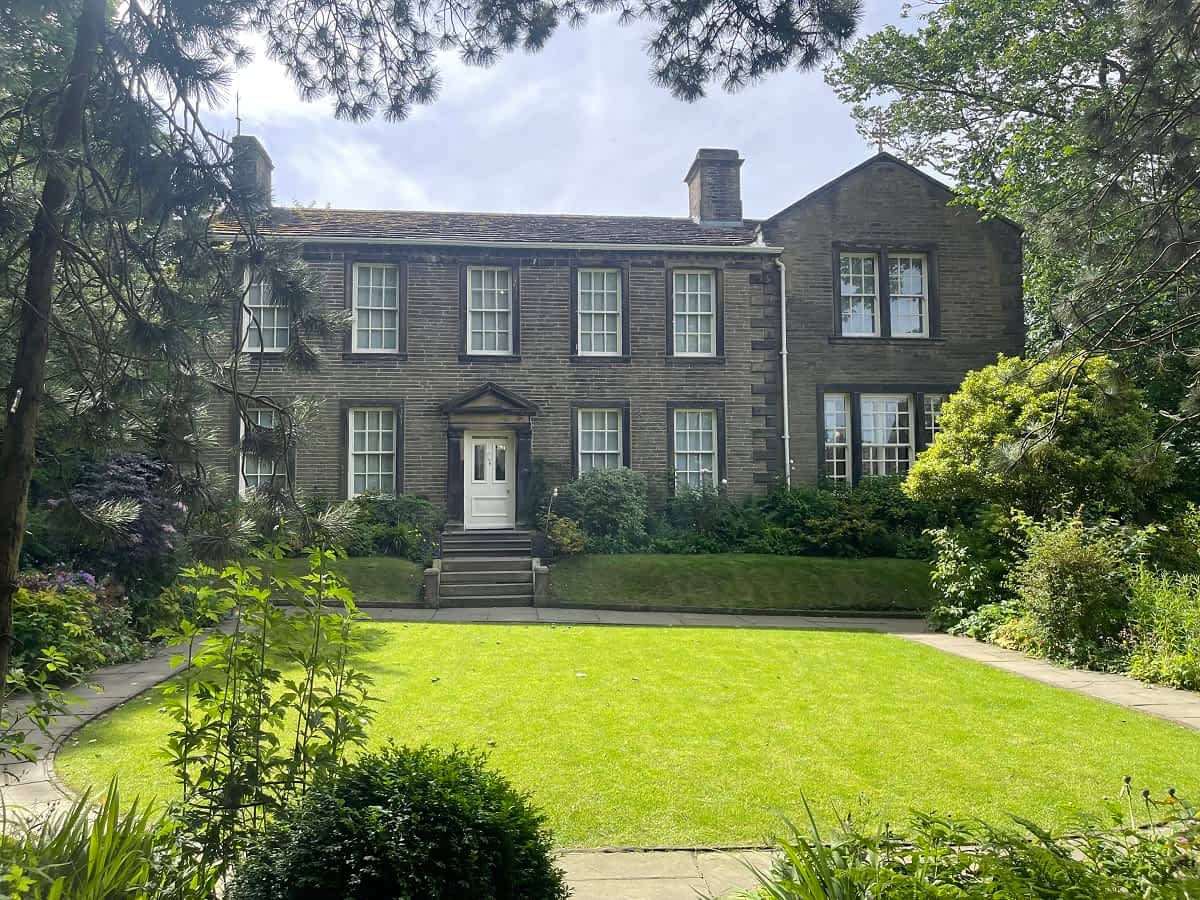
The Brontë family moved to Haworth Parsonage in 1820 from the original Bronte home in Thornton.
The parsonage, a Grade I listed Georgian building, remains remarkably well preserved, offering visitors a poignant glimpse into the daily lives of these literary luminaries.
The museum boasts the world's largest collection of Brontë artefacts, including manuscripts, personal items, and artworks.
The exhibitions at the museum not only preserve the family's legacy but also provide invaluable insights into their private lives.
Items such as Charlotte's wedding bonnet and veil, Emily's paint box, and pebbles collected by Anne resonate with visitors, connecting them intimately to the Brontës' world.
Visiting the Parsonage
The Parsonage Museum is located on Church Street, just off Haworth’s famous cobbled Main Street, overlooking the graveyard of St. Michael & All Angels Church.
Walking through the gate to the garden of the building reveals a pristinely manicured grass lawn surrounded by vibrant floral patches.
Regardless of the weather, the building’s sooty brick facade always seems to evoke a sombre mood, typical of the Gothic atmosphere that the Brontës were associated with. (This is, however, somewhat balanced out by the warm welcome you receive from the enthusiastic staff!).
The ground floor of the building includes the entrance hall, kitchen, dining room, and separate study rooms of Patrick Brontë and Arthur Bell Nicholls.
The upper floor includes Charlotte’s, Branwell’s, and Patrick’s rooms, a room for the servants, a children’s study, and a large exhibition room full of dozens of artefacts.
Patrick Brontë’s Study
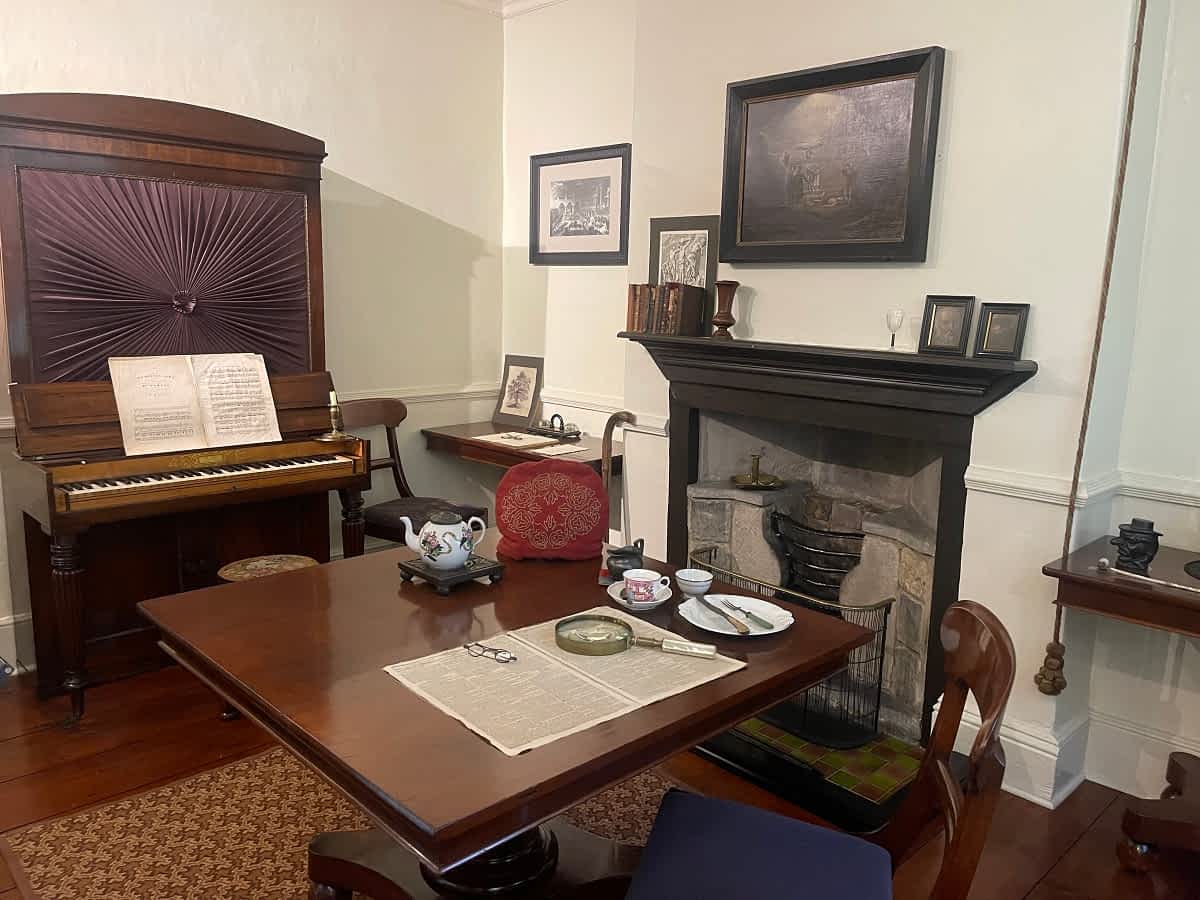
Perhaps the most sober room of the house, Patrick Brontë’s Study was never decorated, instead its plain walls adorned with paintings of biblical scenes.
This room was used to conduct business matters related to the Parish Church as well as giving his children lessons in literature, politics, art, and music.
The Dining Room
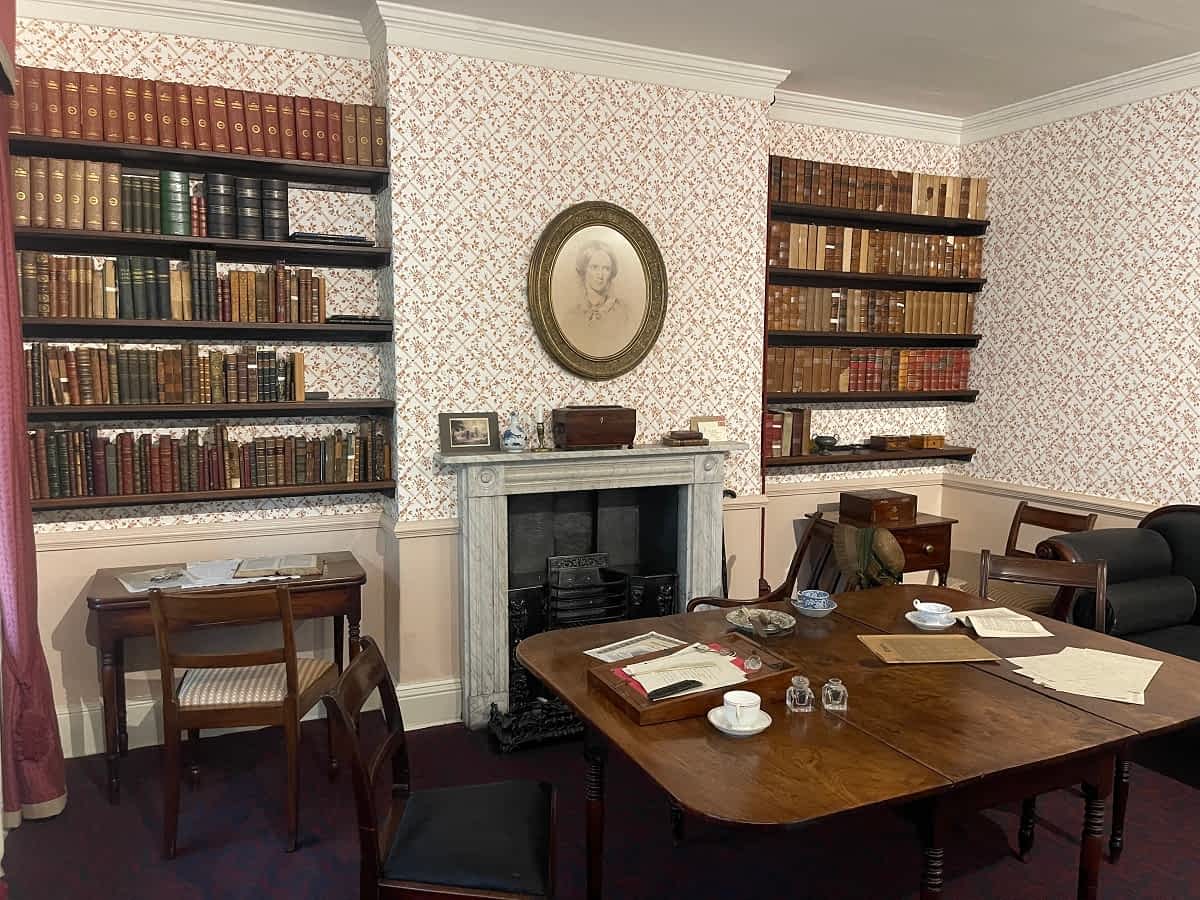
Walking out of Mr Brontë’s Study into the dining room, the atmosphere lightens. It was in this room that Charlotte, Emily, and Anne wrote their classic novels Jane Eyre, Wuthering Heights, and Agnes Grey as they would discuss their ideas around the table.
It is believed that Emily died on the sofa of this room in 1848 from tuberculosis.
The Kitchen

The sisters were expected to contribute to household tasks, and the kitchen became the domain of Emily, who inherited the role of housekeeper after the death of Elizabeth Branwell, the sister of Maria.
It is said that baking bread and ironing allowed Emily the mental space to focus on her writing.
Mr Nicholl’s Study
What was originally a storeroom for fuel became a study for Charlotte’s husband and curate to Patrick Brontë.
The room is home to a small display of artefacts such as urns, vases, and candlesticks from Haworth church before it was demolished in 1879.
Charlotte’s Room
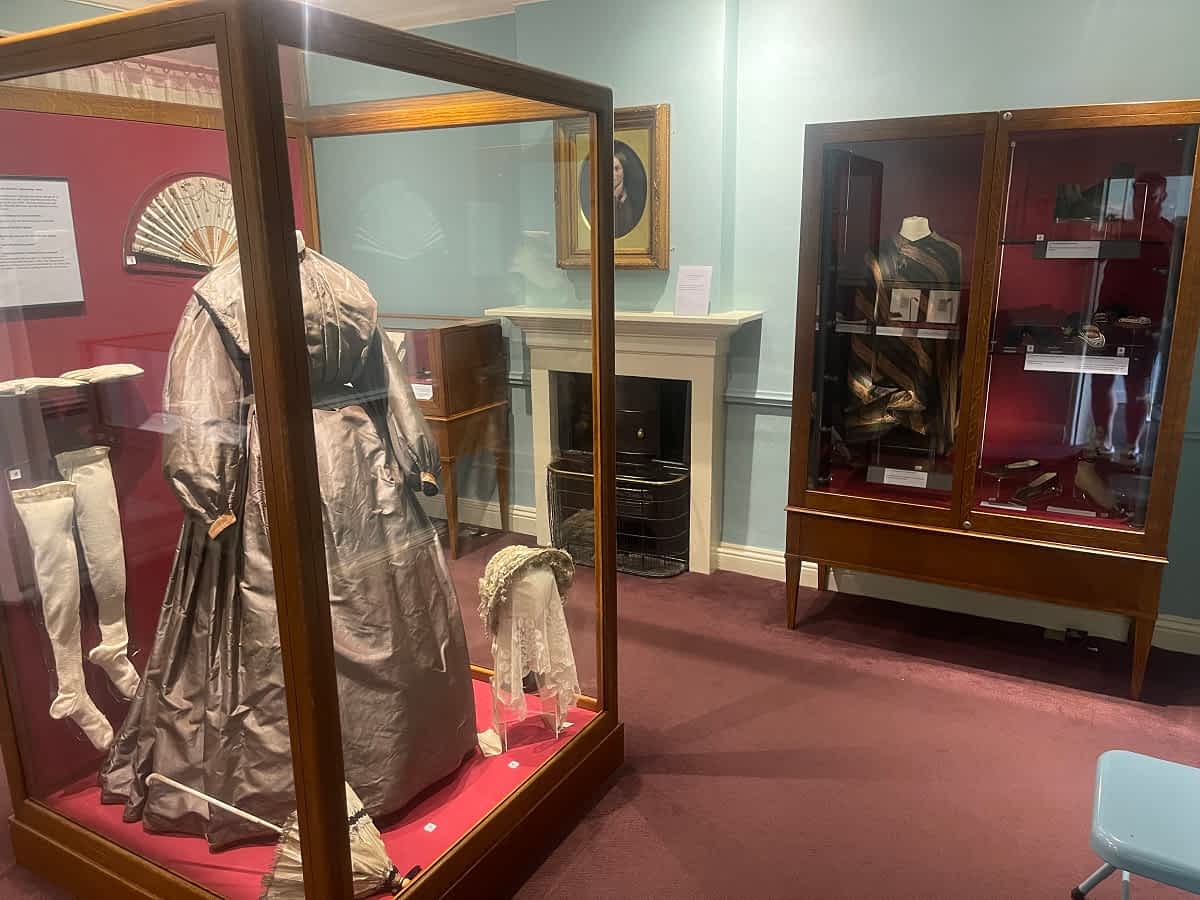
This room has been used by numerous members of the family but is best known as Charlotte and Arthur Bell Nicholls' room after their marriage.
Originally used by Mr. and Mrs. Brontë, it was later occupied by Elizabeth Branwell after Mrs. Brontë’s death.
The room houses a number of original artifacts, including Charlotte’s wedding bonnet and veil, her honeymoon dress, a pair of gloves, a fan, and a parasol. It is also where Charlotte died in 1855.
The Children’s Study

Named after the servants of the house, the Children’s Study was a small room where the Brontë children would study, imagine, and play. Faint pencil drawings on the wall are believed to have been made by the Brontës as children.
Mr Brontë’s Bedroom

This room became Patrick Brontë's bedroom after his wife Maria's death in 1821 at the age of 38.
Patrick used this room to watch over his son Branwell, who struggled with alcoholism and deteriorating health. Branwell died here in 1848, reportedly from tuberculosis.
Branwell’s Room
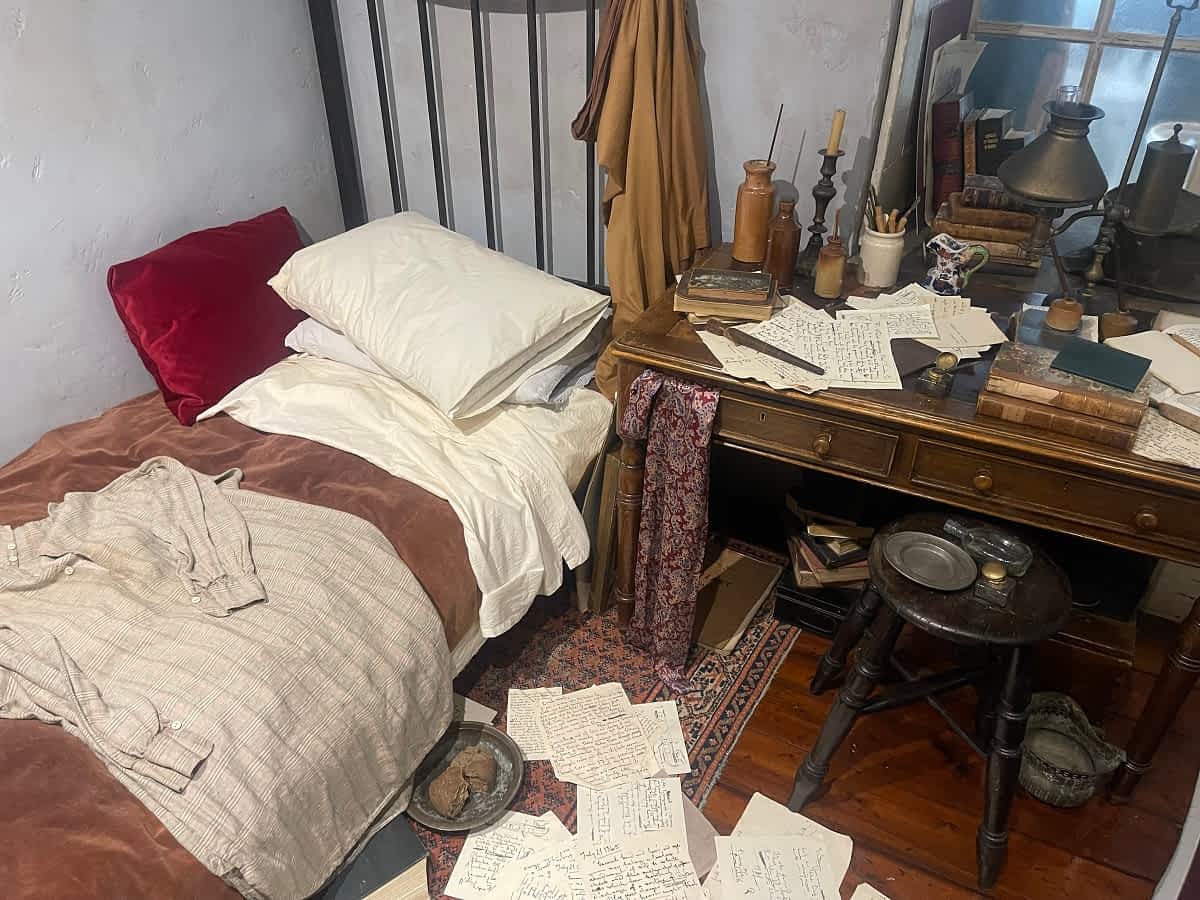
Branwell’s room and study, uniquely disordered compared to the rest of the house, is a poignant depiction of the troubled young man’s life.
Handwritten notes are scattered across the desk and floor, with stale bread and spilled alcohol on the floorboards, offering a glimpse into Branwell’s descent into mental illness and addiction.
Notably, Branwell’s Study is the only room that doesn’t contain original artifacts; instead, it presents an artistic interpretation of what his room may have looked like. In contrast, the other rooms in the house feature original Brontë objects in their displays, providing an authentic look into the Brontë family's history.
Exhibition Room
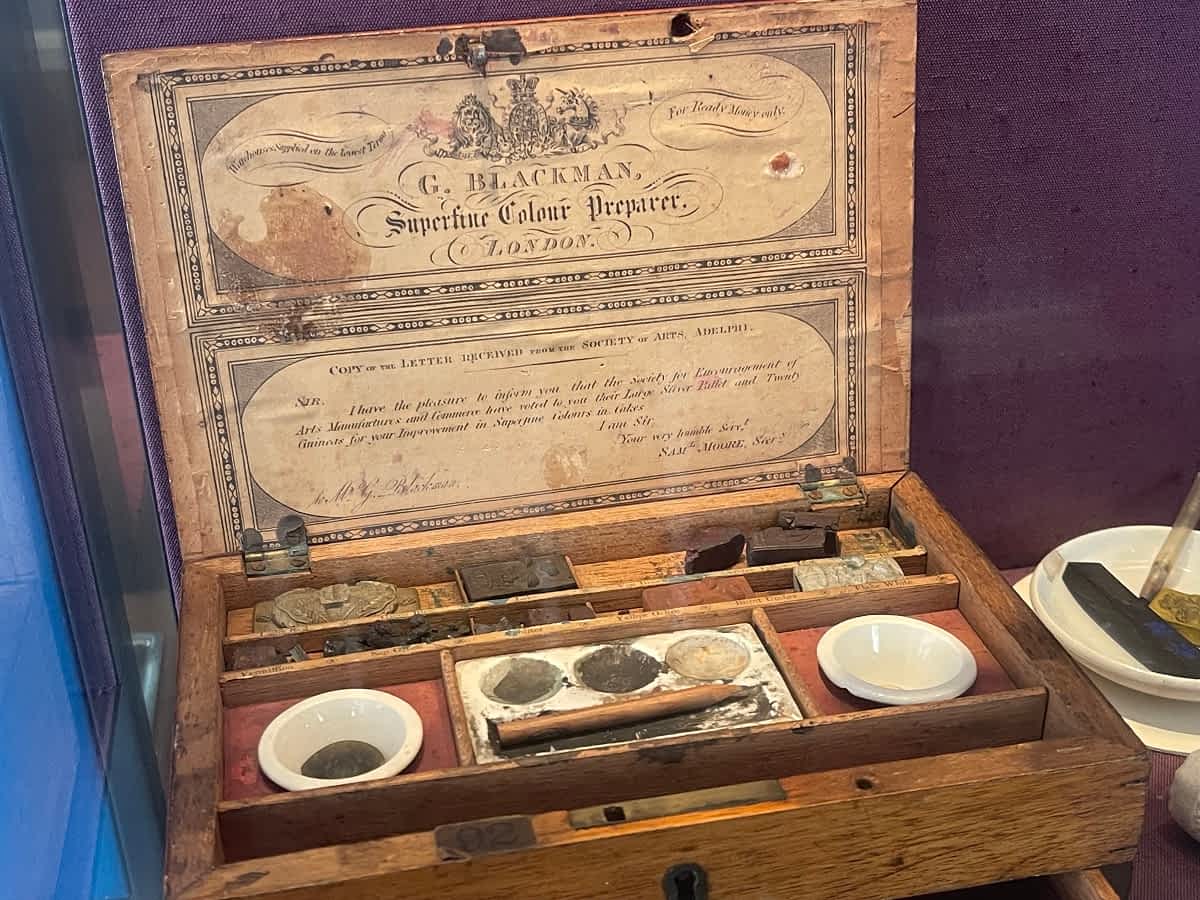
The exhibition room, the largest in the parsonage, houses dozens of artifacts and monuments with descriptions that narrate the 'Bronte story'.
Notable artifacts include Charlotte’s paintbox and sewing workbox, letters penned by the sisters, and family portraits, including a copy of Branwell Bronte’s ‘Gun Group’ portrait featuring all four siblings.
Parson’s Field
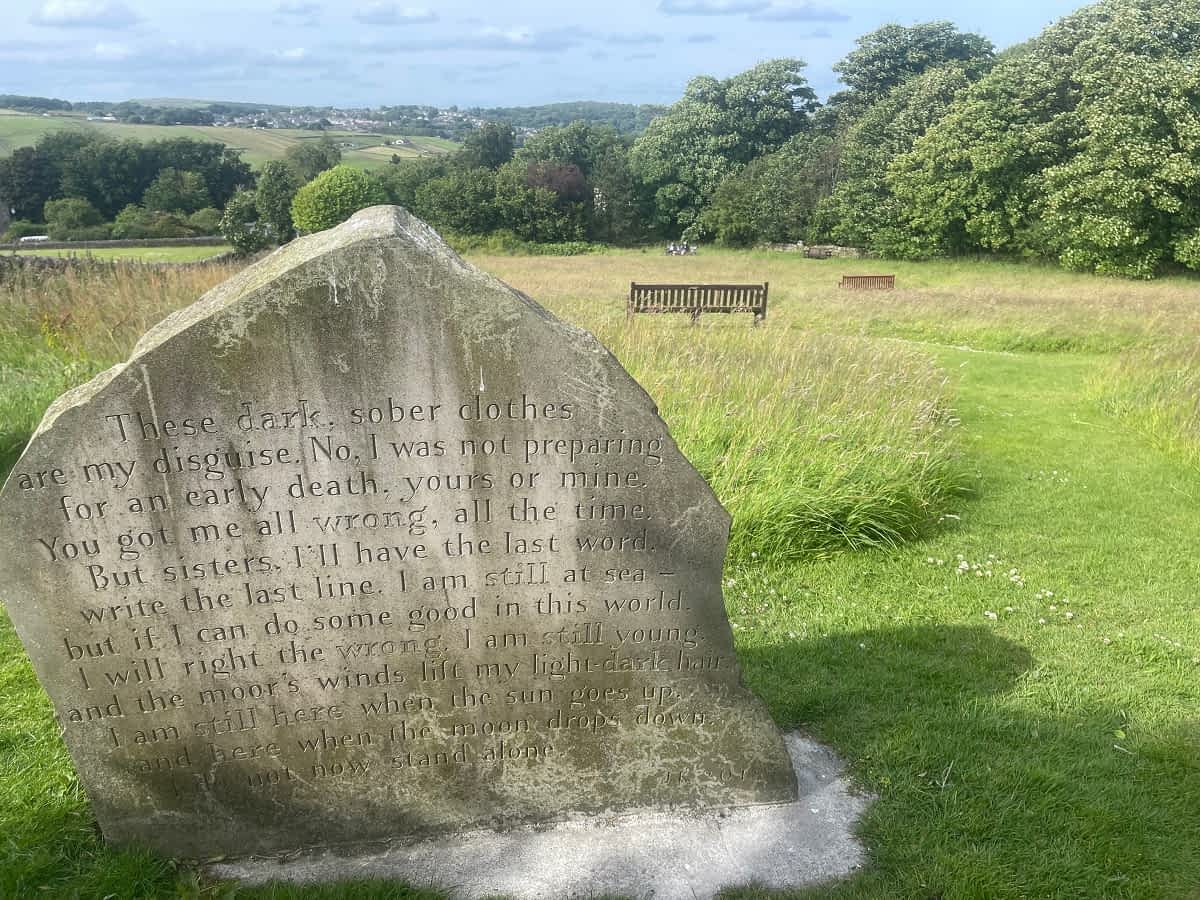
Just behind the parsonage, mostly obscured from view by trees, is a small meadow open to the general public.
Purchased by the Bronte Society in 1957, it is free for all to enter. Several benches are scattered around, making it a perfect spot for a lunch retreat before or after visiting the parsonage.
At the top of the field lies one of the four ‘Bronte Stones’, each engraved with poems inspired by the sisters.
This stone features a poem by Scottish poet Jackie Kay, beginning with the lines: “These dark sober clothes are my disguise. No, I was not preparing for an early death, yours or mine.”
The Brontë Society
Founded in 1893, the Brontë Society is one of the oldest literary societies globally and plays a pivotal role in preserving the museum and its collections.
As a registered charity, the society relies on public funding and membership support to maintain this cultural treasure. Its efforts ensure that future generations can continue to explore and appreciate the Brontës' literary contributions.
The society has a large international membership base. It organises a diverse range of activities, including exhibitions, literary events, and educational programs, aimed at fostering a deeper understanding and appreciation of the Brontës' literary legacy.
Scholars, writers, and artists alike are drawn to the museum's vibrant Contemporary Arts Programme, which celebrates the enduring relevance of the Brontës' themes and characters.
For more information about joining the Bronte Society can be found here.
Brontë Parsonage Info
Opening Hours
March, April, October, November, December 2024:
Wednesday - Sunday: 10am - 5pm
Closed: Monday and Tuesday
May to September 2024:
Wednesday - Monday: 10am - 5pm
Closed: Tuesday
Last entry to the Museum is at 4pm.
Admission Prices (Valid from 1 April 2024)
Standard: £12.50
Concession 65+: £10.50
Teen Ticket 12-16: £6.25
Child 11 and under (as part of a family group): Free
General Concession (for students, disabled people, people in receipt of a means-tested benefit, Blue Light cardholders, and local residents of BD20, BD21 & BD22 postcodes): £7.50
| Address: | Church St, Haworth, Keighley, BD22 8DP |
| Website: | bronte.org.uk |
| Phone Number: | 01535 642323 |
Sources:
- https://www.bronte.org.uk/visit-us
- https://www.lboro.ac.uk/news-events/news/2022/december/reimagining-how-emily-bronte-died-new-research
- http://www.annebronte.org/2023/09/24/accounts-of-the-death-of-branwell-bronte
- https://www.theguardian.com/music/2018/jul/08/bush-sings-new-praises-to-literary-heroine